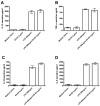Failure of the Anti-Inflammatory Parasitic Worm Product ES-62 to Provide Protection in Mouse Models of Type I Diabetes, Multiple Sclerosis, and Inflammatory Bowel Disease
- PMID: 30336585
- PMCID: PMC6222842
- DOI: 10.3390/molecules23102669
Failure of the Anti-Inflammatory Parasitic Worm Product ES-62 to Provide Protection in Mouse Models of Type I Diabetes, Multiple Sclerosis, and Inflammatory Bowel Disease
Abstract
Parasitic helminths and their isolated secreted products show promise as novel treatments for allergic and autoimmune conditions in humans. Foremost amongst the secreted products is ES-62, a glycoprotein derived from Acanthocheilonema viteae, a filarial nematode parasite of gerbils, which is anti-inflammatory by virtue of covalently-attached phosphorylcholine (PC) moieties. ES-62 has been found to protect against disease in mouse models of rheumatoid arthritis, systemic lupus erythematosus, and airway hyper-responsiveness. Furthermore, novel PC-based synthetic small molecule analogues (SMAs) of ES-62 have recently been demonstrated to show similar anti-inflammatory properties to the parent molecule. In spite of these successes, we now show that ES-62 and its SMAs are unable to provide protection in mouse models of certain autoimmune conditions where other helminth species or their secreted products can prevent disease development, namely type I diabetes, multiple sclerosis and inflammatory bowel disease. We speculate on the reasons underlying ES-62's failures in these conditions and how the negative data generated may help us to further understand ES-62's mechanism of action.
Keywords: ES-62; helminth; inflammatory bowel disease; multiple sclerosis; nematode; type 1 diabetes.
Conflict of interest statement
The authors declare no conflicts of interest.
Figures







Similar articles
-
Testing small molecule analogues of the Acanthocheilonema viteae immunomodulator ES-62 against clinically relevant allergens.Parasite Immunol. 2016 Jun;38(6):340-51. doi: 10.1111/pim.12322. Parasite Immunol. 2016. PMID: 27059010 Free PMC article.
-
Suppression of inflammatory arthritis by the parasitic worm product ES-62 is associated with epigenetic changes in synovial fibroblasts.PLoS Pathog. 2021 Nov 8;17(11):e1010069. doi: 10.1371/journal.ppat.1010069. eCollection 2021 Nov. PLoS Pathog. 2021. PMID: 34748611 Free PMC article.
-
Protection Against Arthritis by the Parasitic Worm Product ES-62, and Its Drug-Like Small Molecule Analogues, Is Associated With Inhibition of Osteoclastogenesis.Front Immunol. 2018 May 14;9:1016. doi: 10.3389/fimmu.2018.01016. eCollection 2018. Front Immunol. 2018. PMID: 29867986 Free PMC article.
-
From the worm to the pill, the parasitic worm product ES-62 raises new horizons in the treatment of rheumatoid arthritis.Lupus. 2015 Apr;24(4-5):400-11. doi: 10.1177/0961203314560004. Lupus. 2015. PMID: 25801883 Review.
-
ES-62, a therapeutic anti-inflammatory agent evolved by the filarial nematode Acanthocheilonema viteae.Mol Biochem Parasitol. 2014 Mar-Apr;194(1-2):1-8. doi: 10.1016/j.molbiopara.2014.03.003. Epub 2014 Mar 23. Mol Biochem Parasitol. 2014. PMID: 24671112 Review.
Cited by
-
The parasitic worm product ES-62 normalises the gut microbiota bone marrow axis in inflammatory arthritis.Nat Commun. 2019 Apr 5;10(1):1554. doi: 10.1038/s41467-019-09361-0. Nat Commun. 2019. PMID: 30952846 Free PMC article.
-
Anti-Inflammatory Effects of Helminth-Derived Products: Potential Applications and Challenges in Diabetes Mellitus Management.J Inflamm Res. 2024 Dec 28;17:11789-11812. doi: 10.2147/JIR.S493374. eCollection 2024. J Inflamm Res. 2024. PMID: 39749005 Free PMC article. Review.
-
Immunomodulatory and biological properties of helminth-derived small molecules: Potential applications in diagnostics and therapeutics.Front Parasitol. 2022 Sep 9;1:984152. doi: 10.3389/fpara.2022.984152. eCollection 2022. Front Parasitol. 2022. PMID: 39816468 Free PMC article. Review.
-
The allure of targets for novel drugs.RSC Med Chem. 2023 Dec 13;15(2):472-484. doi: 10.1039/d3md00621b. eCollection 2024 Feb 21. RSC Med Chem. 2023. PMID: 38389887 Free PMC article. Review.
-
Toxocara canis infection worsens the course of experimental autoimmune encephalomyelitis in mice.Parasitology. 2022 Nov;149(13):1720-1728. doi: 10.1017/S0031182022001238. Epub 2022 Sep 2. Parasitology. 2022. PMID: 36050813 Free PMC article.
References
-
- Rodgers D.T., McGrath M.A., Pineda M.A., Al-Riyami L., Rzepecka J., Lumb F., Harnett W., Harnett M.M. The parasitic worm product, ES-62 targets MyD88-dependent effector mechanisms to suppress ANA production and proteinuria in MRL/Lpr mice. Arthritis Rheumatol. 2015;67:1023–1035. doi: 10.1002/art.39004. - DOI - PMC - PubMed
-
- Rzepecka J., Siebeke I., Coltherd J.C., Kean D.E., Steiger C.N., Al-Riyami L., McSharry C., Harnett M.M., Harnett W. The helminth product, ES-62, protects against airway inflammation by resetting the Th cell phenotype. Int. J. Parasitol. 2013;43:211–223. doi: 10.1016/j.ijpara.2012.12.001. - DOI - PMC - PubMed
-
- Coltherd J.C., Rodgers D.T., Lawrie R.E., Al-Riyami L., Suckling C.J., Harnett W., Harnett M.M. The parasitic worm-derived immunomodulator, ES-62 and its drug-like small molecule analogues exhibit therapeutic potential in a model of chronic asthma. Sci. Rep. 2016;6:19224. doi: 10.1038/srep19224. - DOI - PMC - PubMed
MeSH terms
Substances
Grants and funding
LinkOut - more resources
Full Text Sources
Medical

